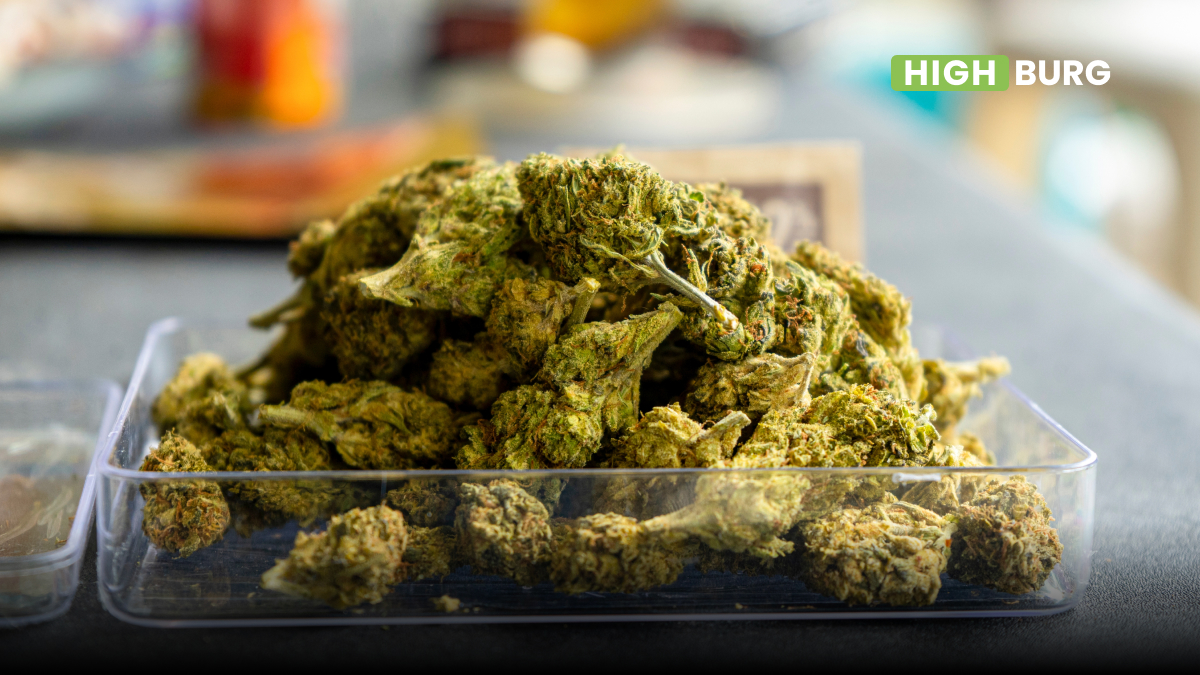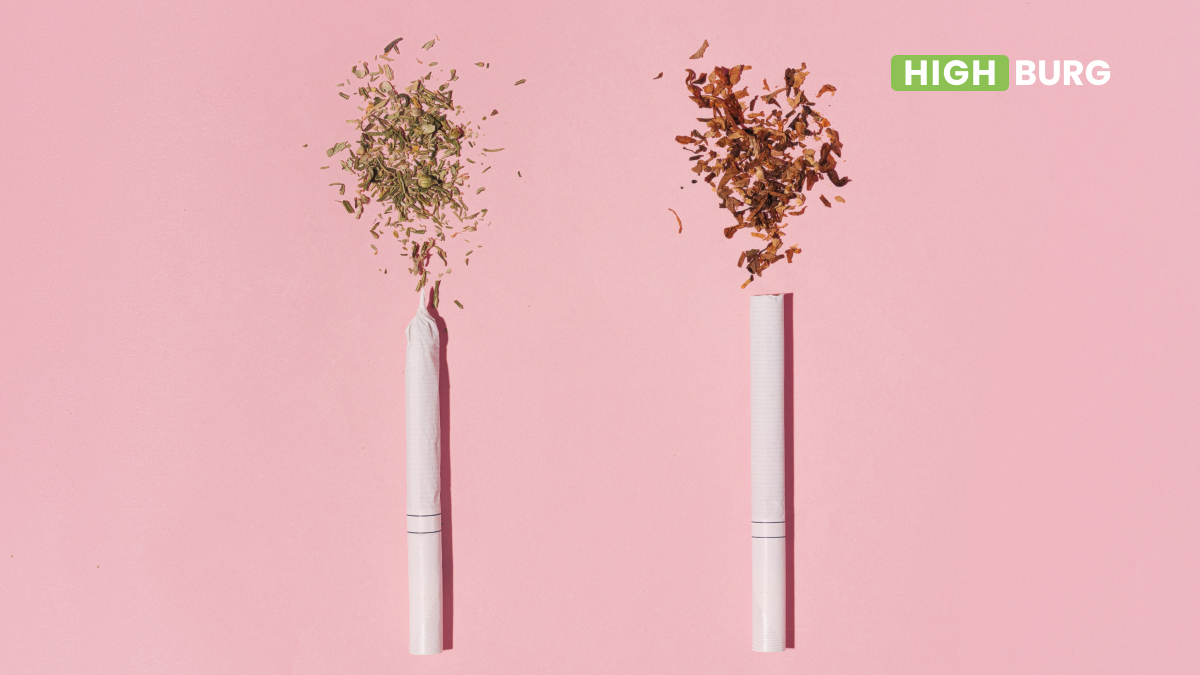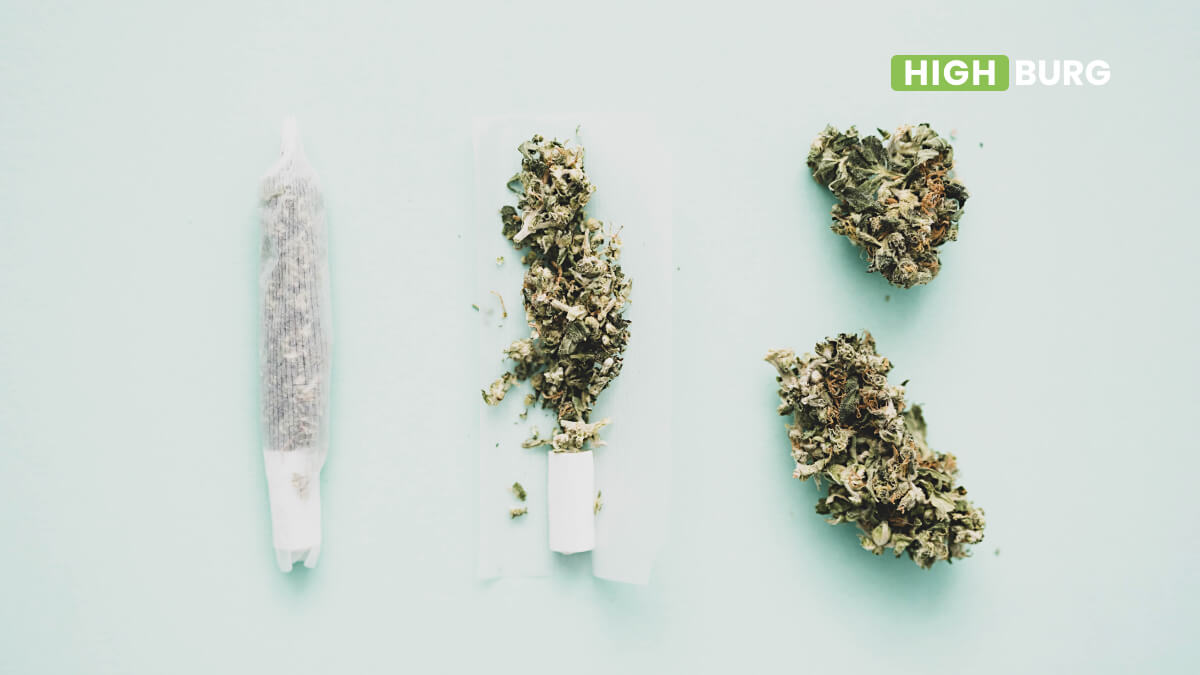What does good weed look like? When it comes to cannabis, this isn’t always as easy as it sounds. This plant has many different strains, and these can be created in many different ways, which can make them appear very different from one another.
While the biggest difference between strains may be their psychoactive effects or their medicinal qualities, there are actually quite a few differences in appearance you can detect just by looking at them, especially if you know what to look for.
Good Weed Looks Frosty
The first attribute of good weed is that it looks frosty. The trichomes, which are the tiny crystals on the cannabis plant, should be visible to the naked eye and give the plant a frosty appearance. If the trichomes are not visible, the weed is usually not that high of quality.
Frosty buds (or just “frost”) are covered with tiny white crystals that give them a sparkly appearance. The crystals are the resin glands where THC is stored. These glands contain cannabinoids that give each strain its unique flavor and scent profile and also vary from plant to plant depending on environment and genetics. The higher quality strains tend to have more frost, as well as more trichomes.
Sticky
Second, good weed is sticky. The sticky feeling is caused by the resin, which is secreted by the trichomes. The resin contains THC, CBD, and other cannabinoids that give cannabis its effects. Good cannabis that has been properly cured and cared for will be sticky to the touch.
The reason for this is because the plant produces resin as a defense against insects, pests, and sun damage. This resin is often known as trichomes and can be seen on the bud in small bumps. Marijuana that has not been properly cured or has not had time to dry properly will not be sticky at all.
If it does feel sticky then there is likely something wrong with your product. This could include mold, fungus or bacteria which could make you sick if consumed by smoking or vaping it!
Marijuana comes in a variety of strains, and each one has different properties. Some are sticky, some are not.
The amount of resin produced by the cannabis plant depends on its genetics (genotype) and environmental conditions (phenotype). It can also depend on the time of year; freshly harvested weed is going to be less sticky than the stuff you buy from a dispensary in the winter months when it hasn’t been harvested in a while.
There are two types of cannabinoids in marijuana: THC and CBD. THC is psychoactive, meaning it gets you high, while CBD does not. Both cannabinoids have resinous glands called trichomes on their leaves and flowers that produce resin-like substances called terpenoids, which stick to your fingers when you touch them.
The stickyness of weed varies from strain to strain and even within different parts of the same plant, but generally speaking it’s about 10 percent THC content by weight for most strains sold in dispensaries today — which means more sticky buds!
Smell
Third, good weed has a strong smell. The terpenes in cannabis are responsible for its distinct smell. There are many different types of terpenes, but the two that make up most of the aroma profile of marijuana is myrcene and limonene. Myrcene smells like pine and lemon; limonene smells like citrus fruits.
These same chemicals also produce aromas in other plants like lemons and oranges, so they can be detected without smelling weed too! If your weed doesn’t have any scent, then it’s probably not going to have much flavor either (i.e., if you’re eating food).
You might want to check out where your weed came from or how long it was stored before use. Conversely, heavy odor may indicate mold spores or other contaminants. You should stay away from this product and find another source instead. After taking a deep breath of the weed, look at it closely.
Some strains will have crystals on them, while others will just be buds. Is there anything else present besides those pretty little crystals? Are there spider webs clinging to some of the buds? That could mean pesticide use and mold spores. Try inhaling again after looking at the plant – does it smell stronger than before?
Good cannabis smells like a sweet, earthy, slightly piney flower. Bad cannabis is often described as having a “funk” or “fungus” smell. This is not always the case, but it is not unusual for some strains to have this characteristic.
If you are used to smoking marijuana that has been rolling around in your friend’s ashtray for the last month, then it is possible that any weed will smell like trash. But if you’re new to cannabis, then there are some tips and tricks to help you identify good from bad.
When you buy weed from a dispensary, the budtender will usually tell you about how much THC (and other cannabinoids) their strain contains. But they may also tell you what type of experience their strain offers and how long it takes before you start feeling its effects.
When smoking good quality cannabis, most people can expect to feel relaxed within 10 minutes and have an appetite within 30 minutes. The effects may be felt all over the body or just in specific areas such as the eyes or stomach area.
If your cannabis is fresh and properly cured, it should have a very pleasant aroma. It should not smell like chemicals or other herbs.
There are many different strains of marijuana, each with their own unique scent profile. Some strains have more of an earthy smell while others may have a more piney or citrusy smell. Typically, the smell will be stronger when the buds are ground up than when they are whole.
Cannabis buds should have a strong, pleasant aroma that smells distinctly like marijuana but isn’t overpowering.
Taste
Fourth, good weed tastes great. There is no way around it. The flavors and aromas vary depending on the strain you’re smoking, but there is a certain richness and earthiness that comes with all good cannabis strains.
If you smoke one of those weird-tasting strains that is not supposed to taste or smell like anything, then chances are it’s not the real deal. Cannabis should have a distinct flavor that cannot be replicated by any other plant material or drug that people consume recreationally (excluding marijuana).
Sure, some smokers may claim they can’t tell the difference between good weed and bad weed in terms of flavor because they smoked so much for so long. But for someone who hasn’t smoked in over a decade, it is easy to distinguish what does and doesn’t taste right.
Moreover, when people go back to smelling weed again after years of abstinence, it takes a few extra seconds or minutes before they realize that the smell coming from this mystery baggie is not our regular herb. That’s because the sense of smell is directly connected to our memory center.
So if they haven’t smelled weed in ten years and suddenly their nose detects something funky – even if it smells just like our old favorite strain – they know something isn’t quite right. What does good cannabis taste like?
The best way to describe the taste of good cannabis is “earthy.” There’s a certain dirtiness to it. And that’s not a bad thing.
You’ll know when you’ve had good cannabis if you’ve ever taken a hit on a joint, and then immediately felt like you needed to take a bite out of some bread or food. That’s because good cannabis has a natural sweetness to it. It doesn’t taste like burnt popcorn or hay. It tastes like a freshly plucked leaf from your backyard garden (or whatever your preferred strain is).
Cannabis that has been cured properly will have an earthy flavor profile with notes of pine, citrus, spice and mint. The key word here is “properly cured.” To properly cure your cannabis, it needs to be dried slowly over time using low heat.
This allows for proper moisture evaporation without burning off any terpenes — chemical compounds found in both plants and animals that give them their smell and taste.
When smoking marijuana that hasn’t been properly cured, there is often an acrid taste present due to the smoke burning off all its terpenes before reaching your lungs.
The taste of cannabis is a combination of its terpenes and cannabinoids. Terpenes are what give each strain its unique aroma and flavor profile. The best way to think about terpenes is as essential oils that are found in other plants and flowers.
Some examples include minty-tasting linalool or piney limonene. Terpenes can be found in many different types of foods and beverages, but they’re most commonly used in cooking as spices or herbs.
Cannabinoids are the chemical compounds that interact with our endocannabinoid system (ECS). There are two major categories of cannabinoids: phytocannabinoids and synthetic cannabinoids (man-made). Phytocannabinoids are produced by plants while synthetic cannabinoids are made in laboratories.
The two most commonly known cannabinoids are THC and CBD, but there’s a whole host of others you may not know about like THCA, CBDA and CBN among others!
The High
Fifth, good weed gives you a potent high. As explained by The Atlantic, the amount of THC in cannabis can range from less than 1% to over 20%. THC is the psychoactive ingredient in marijuana that creates the feeling of being high or intoxicated.
If you’re looking for weed that will get you high, it needs at least 10% THC content and 0% CBD content. If these two factors are not met, then what you have may not be worth the price.
However, there are many other attributes that make for good cannabis such as whether it’s dry enough so that when smoked, it doesn’t cause an irritating throat hit.
There are many other factors that come into play such as how fast your tolerance increases after smoking or if there’s any dirt visible in the baggie of pot. Some strains are bred to create more sedative effects while others provide more energy, but they all have their specific positives and negatives.
Understanding these attributes will help ensure that what you’re smoking is of high quality and won’t leave you disappointed or regretful with your purchase. Smoking anything is bad for your health, however, knowing where to get good weed can be helpful in determining the quality of product you’re going to smoke.
Attributes At A Glance
Here are some attributes to look for when you’re trying to detect good weed:
- Good weed is typically a lighter green color.
- The buds should be dense and tightly packed together.
- There should be few, if any, brown or yellow spots.
- The trichomes (the tiny white crystals on the surface of the buds) should be visible and plentiful.
- The bud should smell pungent and earthy, with hints of citrus or other fruit.
- When you break open a bud, it should snap cleanly in half. If it crumbles or is too dry, that’s a sign that it’s not high quality. The trichomes may also be patchy, which means they haven’t been properly covered in resin glands. These kinds of buds will also emit an unpleasant odor. Sometimes people call this burnt popcorn.
The bottom line is, don’t buy your weed based solely on its appearance. In fact, avoid buying from someone who looks like a dealer–that should be your first clue that the product isn’t worth buying.
As soon as you get home from the dispensary, take a close look at what you’ve purchased before rolling up or vaporizing it. You’ll save yourself from wasting money and from getting less than what you paid for!
Final Thoughts
Now that you know what to look for in good weed, you can start training your senses to detect it. Start by taking a close look at your stash and see if it meets the criteria mentioned above. If not, don’t worry—there’s still hope.
You can improve the quality of your weed by paying attention to how you store it and keeping an eye out for mold or pests. With a little effort, you can ensure that your weed is always top-notch.



